“Cowboys” got that moniker because most drovers were exactly that – boys summoned to do a man’s job.
According to the Seven L Ranch history, ranch founder E.W. Boyt (Paxton Ramsey’s great-grandfather) arrived in Texas at 15 from Mississippi on a cattle drive.
“Day worker” or “colt breaker” were terms that probably were not invented yet; however, it seems Mr. Boyt was a good hand.
Breaking horses to suit other ranchers or Teddy Roosevelt’s Rough Riders, along with assembling work teams, was a chance to purchase every “cowboy’s dream,” the first section of a family-run operation that is a century ranch today.
This outfit has kept up with modern-day management tools, along with technology. Yet, one thing remains much the same as it did in 1904; cattle are worked horseback and handled much in the same fashion as they were when the Devers, Texas ranch was founded.
“A lot of our country you can’t get to unless you are horseback and we try to get through all our cattle every day,” says ranch manager Paxton Ramsey.
“If we see a bad eye or hoof rot, we have our medicine and we’re setting on go so we can to tend to business in a timely manner.”
Certain types of equine athletes or partners are needed to handle the daily grind of ranch work. Operations that still use traditional manners often breed the remuda, focusing on the traits needed for a day’s work.
“We’re in the horse business. Prowling pastures, branding and shipping are a good way to grow those horses,” Ramsey says. “We have to do our homework to keep them mentally and physically prepared for the test.”
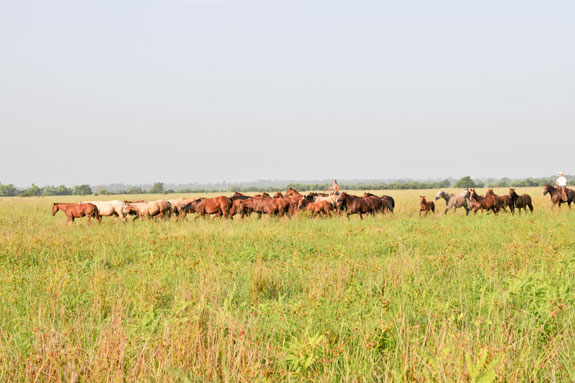
Selection and preparation
Selecting individuals that will keep cowboys mounted requires the same diligence as culling and selecting the cow herd. Getting the job done often depends on the partnership.
“We’re trying to breed bigger boned, heavier muscled horses that can still move. I want plenty of heart, but that horse has to be athletic enough to get the job done,”
Ramsey says. “A horse is only a tool and the cowboy is only as sharp as his tool. That’s why it’s important to be a good horseman. Typically, the guys who ride good horses will know cattle and how to work them.”
Keeping cowboys well-mounted is only half the battle. The never-ending training sessions for young mounts and proper communication helps cowboys along with equine partners prepare for the next day’s work.
“Every cowboy has two to six horses in their string. Typically the string will consist of two older really nice horses, two that are coming along each day and two broncs (young horses).
If we’re just prowling pastures, most of us will use one horse per day. When we get into tougher jobs like branding and shipping,
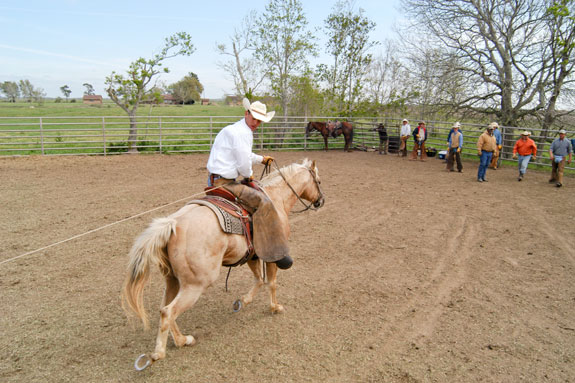
it’s not uncommon to use two or three horses per day,” Ramsey says. “These horses don’t have a problem being physically prepared to work; it’s the mental challenge for most.
Our cowboys need to be prepared. Most nights we get our heads together so we can all be mounted on horses that will handle their job the next day.”
Using what some would call “old-fashioned” techniques, handling cattle with the aid of an equine partner can quickly become intertwined with current industry buzz words like efficiency, time management and stress-free techniques.
“It is important we understand how to handle cattle quietly. Come branding or shipping day, some cowboys are pretty efficient and will help you.
Unfortunately, others won’t,” Ramsey says. “In the last 10 or so years, stress-free handling and being efficient have been tied to profit.
Roping and dragging calves to the fire is pretty stress-free when you consider they are away from their mothers for a few minutes compared to all day.”
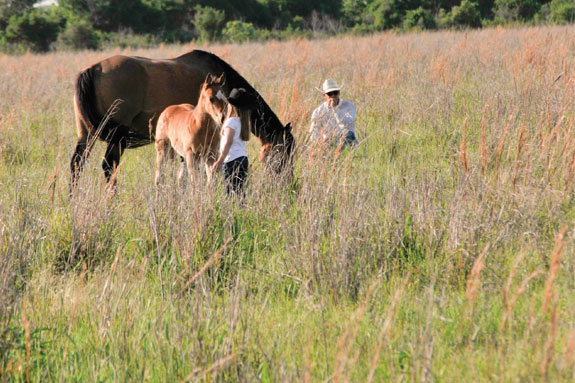
Ready to market
Most outfits look to perform management in a timely manner. Knowing the cow herd and being able to handle cattle with less labor is also another requirement of today’s cattlemen.
“Age and source verification fit our marketing goals. Effective management helps us attain a certain profitability level we must achieve to be successful,”
Ramsey says. “When cattle are used to being handled, we can hold a group of cows with very few cowboys.
We have to get cows wormed and vaccinated in a timely manner. Seeing our stock every day definitely helps. Something as simple as getting all the cattle to the pens the first time, no doubt makes you money.”
Preparing to market cattle or shipping cattle are big days for most operations. Low-stress handling and having cowboys with the know-how goes a long way to presenting a good image.
“If I have buyers coming, it’s relatively easy to separate steer pairs into one group and heifer pairs into another.
I can take a buyer and show him what he’s looking to buy and it makes us both more efficient,” Ramsey says. “We can manage and organize our herd to get those premiums that are available.
Shipping day is the most important day of the year. It’s an opportunity to build confidence in your buyer. He’ll know you have been doing the work the other 364 days a year, based on watching you work one day.”
Ultimate success of an operation often depends on how the genetics perform down the line. Ramsey feels the way Seven L Ranch calves are handled sets them up for achievement in different situations.
“Calves are a little more comfortable because they have seen cowboys horseback and know what to do,” Ramsey says.
“When they get to wheat pasture or the feedlot, more than likely, handlers are going to be horseback. This is one less thing calves have to worry about when they are making the adjustment at a critical time in their lives.”
Unfortunately, in the beef business, every day sometimes brings a new challenge. Working cattle in the traditional manner could help avoid a wreck, even in the most challenging situations.
“We had 175 pairs in 4,500 acres all of a sudden be without water. Two cowboys were able to gather the herd and go four-and-a-half miles to water because of the way we handle our cattle,”
Ramsey says. “On a much greater note, a couple years ago, Hurricane Ike hit south Texas. We had a lot of cattle and very few fences. Large groups of cattle needed to be separated and separated then. The only way we could do it was from the back of a horse.”
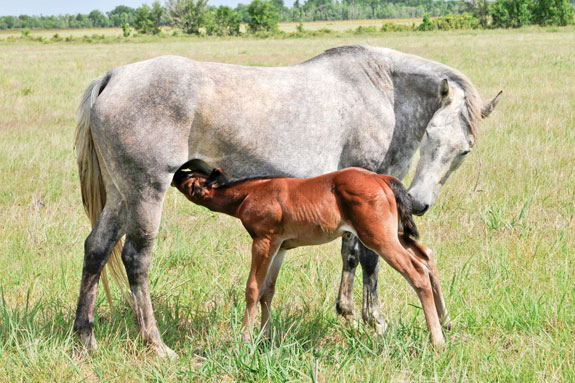
Getting the job done
Working cattle efficiently will always be a topic among beef industry specialists. The dominant evaluator of handling practices may come from outside the confined walls the industry tends to live under.
Stress-free handling has been linked to profit, but more importantly, satisfying the needs of our opponents, whether most outfits think this way or not, could help preserve the cowboy lifestyle.
“No doubt there are operations that don’t have a horse that can accomplish the same management goals as we do.
In our line of work, the older cowboys pass knowledge to the younger ones,” Ramsey says. “There is a great sense of camaraderie and we typically push each to become better at what we do.”
The talent it takes to handle cattle from the back of a horse is hard to explain. There are no tutorials or meetings that can benefit most trying to learn the trade.
“Blood, sweat and tears” is a common analogy for a lot of things, but something most horsemen take to the bank and it is vital to share knowledge to become a better hand.
“I have to have the confidence I can split my crew and the job will get done like I would do it. The camaraderie makes the unit better.
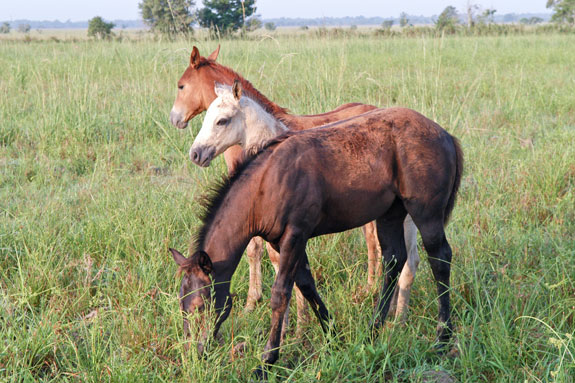
I can send guys to do a job and know it will get handled and it’s nice to be able to do that,” Ramsey says. “People don’t understand how hard being a cowboy is until you try it.
Most learn real quickly the artistry involved, and you have to get dirty. When shipping day goes well, it’s because I am surrounded by good cowboys. You really don’t realize how talented someone is until you do it yourself.”
Agriculture is often criticized for holding onto antiquated traditions. Following in Dad’s footsteps sometimes means abandoning what some feel are outdated methods.
Ranching with the help of equine athletes is not the romanticized Hollywood version and far from the vision of the rodeo arena.
Working in tandem with the equine partner, like a lot of traditional methods, has fallen victim to new ideas and technology.
For those who share the cowboy bond, it’s sacred. This occupation is kept alive on ranches from coast to coast.
Regional methods may differ a little from ranch to ranch according to “cowboy code,” but bottom line, for most, it works and passing on knowledge is a way of life.
“‘Cowboying’ is definitely a lost art. There are a lot of factors, such as government policy, real estate prices and animal rights groups, that discourage agriculture.
Ranchers need to realize how important it is to continue teaching,” Ramsey says. “This industry started with people horseback.
There’s a reason it’s still around today. I was very fortunate to grow up working with guys who had the answers when we had problems.
We have to pass this knowledge to the next generation, as generations past shared with us. I know when we ride away the job is finished and done right.” ![]()
PHOTOS
PHOTO 1: Holding and cutting the herd are everyday duties on the ranch. Each cowboy has a string of two to six horses. Proper communication will keep cowboys well-mounted. Efficiency is a key word for most operations these days.
PHOTO 2: Ranch horses will be marketed to outside clients because they receive quality on-the-job training at Seven L Ranch.
PHOTO 3: Dragging calves to the fire is a staple at most traditional ranches. Stress-free handling is a big part of the philosophy at Seven L Ranch. Handling cattle quietly and making sure the job is done right before you ride away from the herd is a way of life on the ranch.
PHOTO 4, 5, 6: Except for breeding season, ranch studs work in the rotation and earn their keep. Mares are trained enough to make sure they will fit the brood mare band. Selection pressure is put on each mare to produce the right kind of foals that will work on the ranch.Photos courtesy of Seven L Ranch






